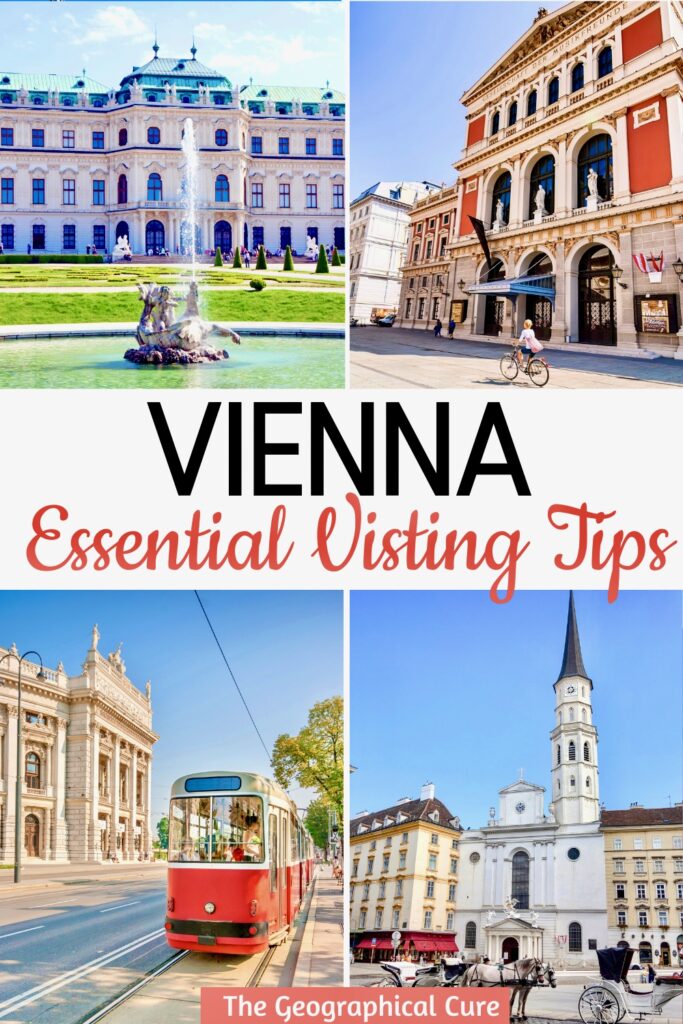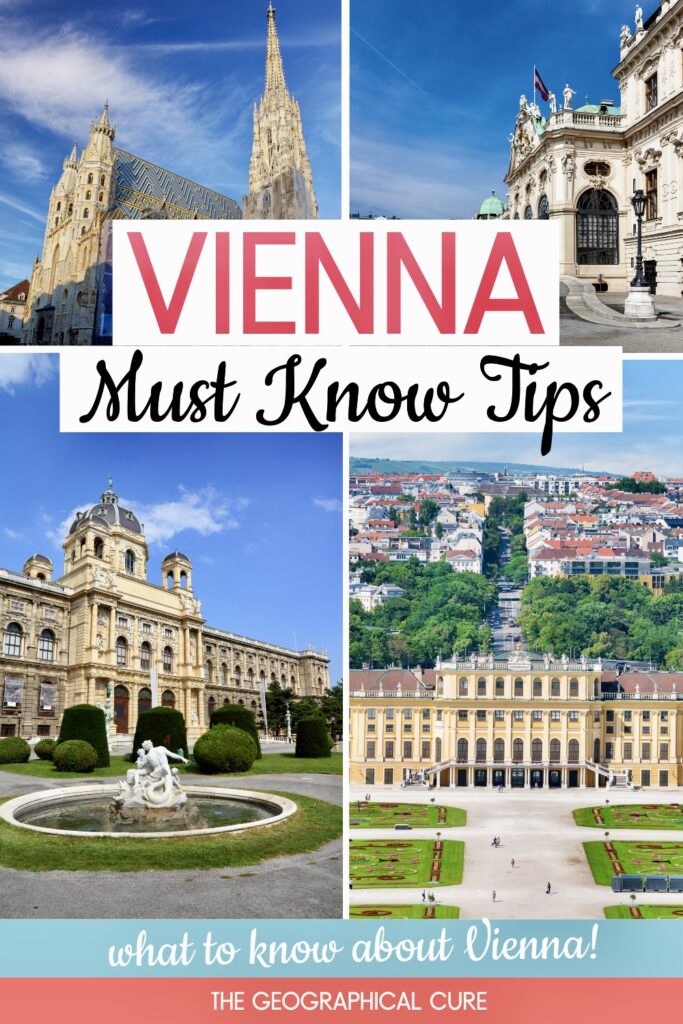Gearing up for a trip to Vienna? You’re in for a treat!
Vienna is a vibrant metropolis where the handsome relics of the imperial past stand alongside top notch cultural venues and glamorous shopping streets.
It’s a city where classical music and the cozy coffee houses create a unique atmosphere. This city has a lot to offer, from its rich heritage to its lively streets.
To help you make the most of your Vienna visit, I’m sharing the ins and outs of visiting this European jewel.
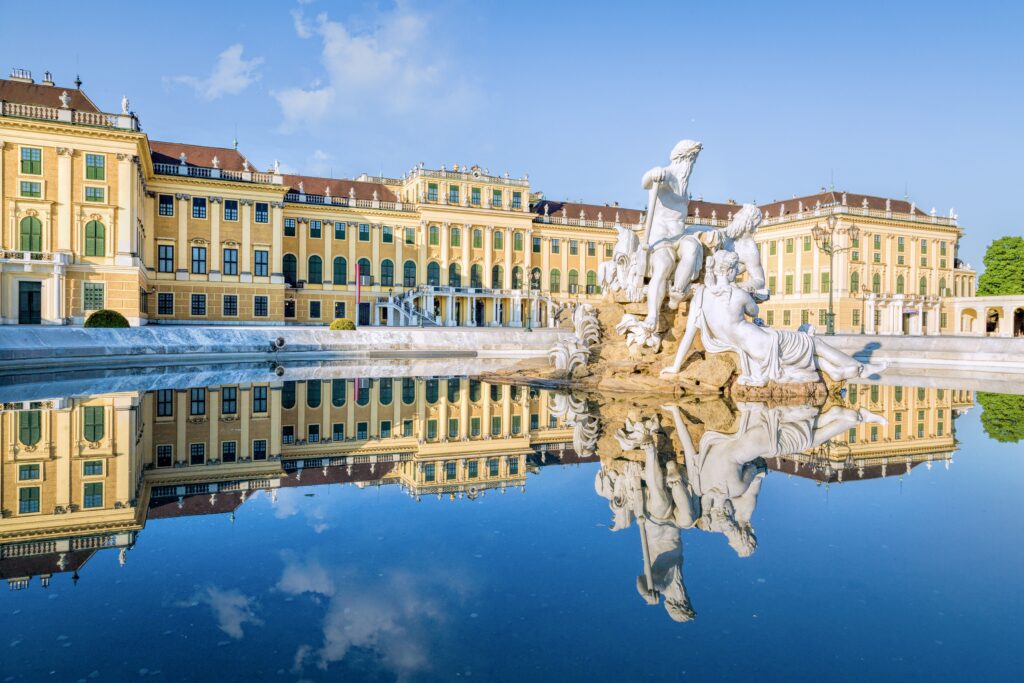
Tips & Tricks For Visiting Vienna
How To Get To Vienna
You’ll likely fly into Vienna International Airport (VIE). You can get to the city by train, bus, or taxi.
The fastest way is via the City Airport Train. It connects the airport with the Wien-Mitte station every 30 minutes. You can purchase tickets online or at the airport
You can also book a private transfer to your hotel. You’ll reach the downtown in about 25 minutes, more if there is traffic.
If you arrive in Vienna by train, you’ll be at Hauptbahnhof Station, the main train station in the city. From there, the metro or a taxi will have you downtown in 5 minutes.
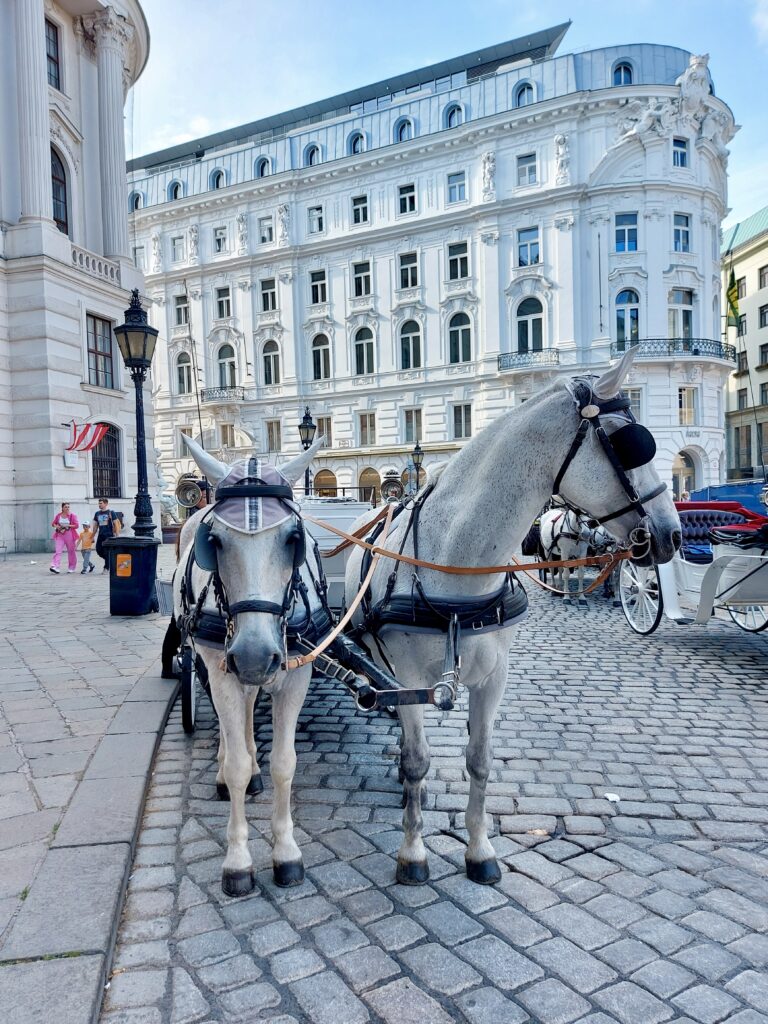
How To Get Around Vienna
Vienna is a compact and pedestrian-friendly city, with a flat city center and numerous attractions conveniently located within the Ring Road.
Many parts of the city center are pedestrian-only, making it easy and enjoyable to explore on foot. Other parts are restricted to cars with special permits.
If you stay in the Inner Stadt, everything is walkable. However, some sites in Vienna are beyond walking distance.
Thankfully, the city boasts an efficient and user-friendly public transportation system. And you can always take the hop on hop off bus or go on a horse drawn carriage ride known as a “flaker” ride.
Alongside these modes of transport, taxis are readily available, though they’re not typically hailed on the street. Instead, you’ll find taxi stands near popular locations like the Staatsoper, Hofburg Palace, and various museums.
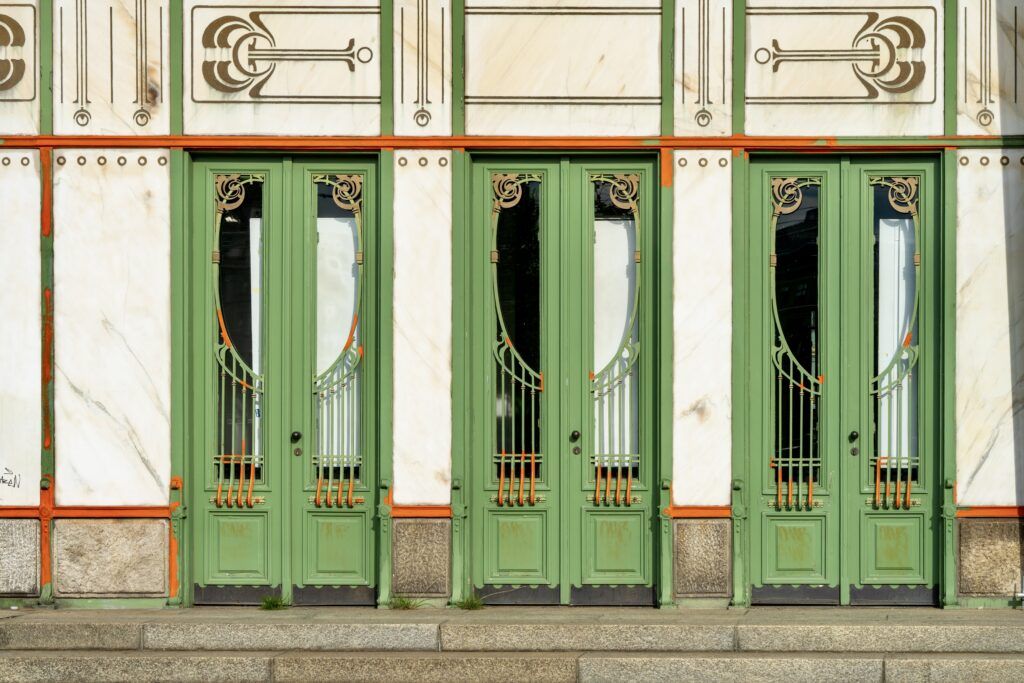
How To Take The U-Bahn
The U-Bahn (metro) is the quickest way to navigate the city. The network is extensive, covering all key areas with frequent services. It’s clean and safe, one of the best metros in Europe. Knowing how to use it is a key Vienna tip.
Purchase a ticket from machines at stations, online, or at tobacco shops. Tickets must be validated at the blue machines before boarding.
The U-Bahn operates from early morning until late at night. Maps and signs in stations and trains are tourist-friendly, making it easy to find your way.
For a convenient journey, consider buying a 24 hour or multi-day travel pass if you plan to use public transport frequently. If you have a multi-day pass, you only need to validate it once.
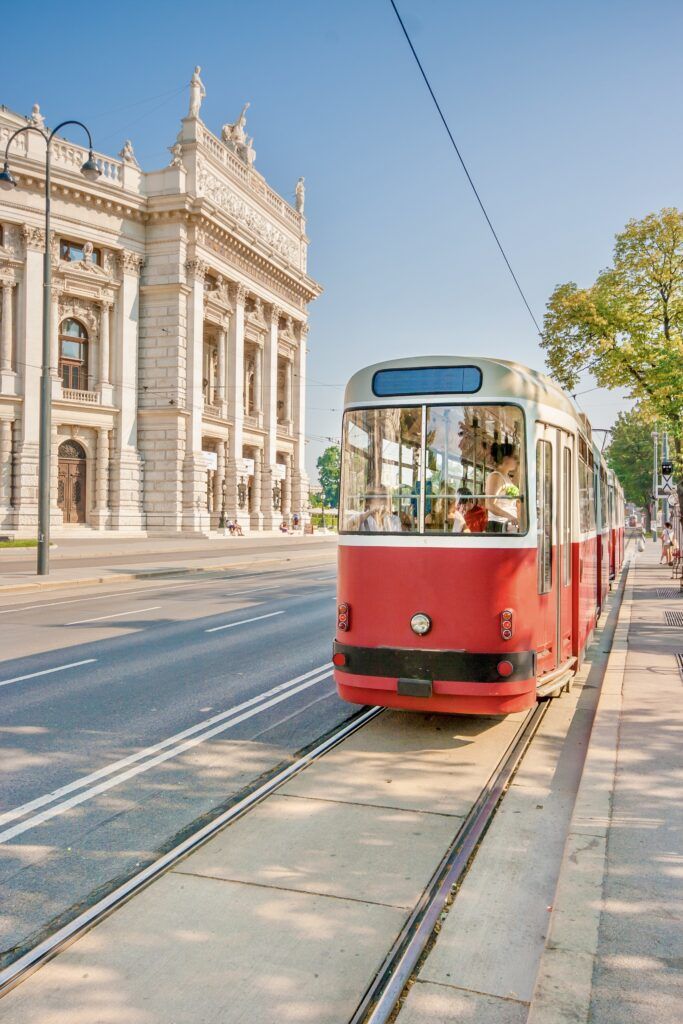
How To Take The Ringstrasse Tram
For a tour around the Ringstrasse, you can take tram lines 1 or 2. These above-ground trams circle the Ringstrasse and pass by many key attractions.
You can board the trams at any designated tram stop along the Ringstrasse. Look for tram stops marked with a “Strassenbahn” sign.
Purchase your tram ticket in advance from ticket machines at U-Bahn stations, tobacco shops, or via the Wiener Linien mobile app. Tickets are not sold on the tram.
Before boarding, validate your ticket in the blue ticket-stamping machines found at tram stops.
Remember, Vienna’s trams run frequently, so if you miss one, another will be along shortly.
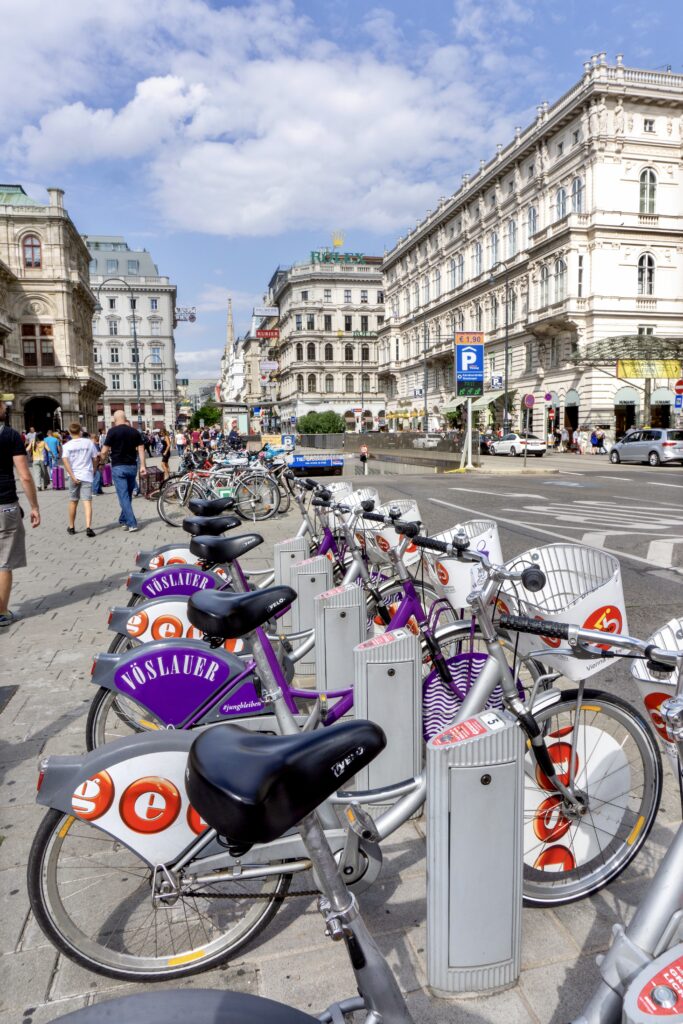
Bike Or Segway In Vienna
Vienna is great for biking, thanks to its extensive network of bike paths and lanes, coupled with the city’s mostly flat terrain.
There are so many bike paths that, as a pedestrian, it’s important to keep an eye out to distinguish between walking paths and biking paths.
The city also offers a convenient City Bike program, which allows you to rent bikes from numerous stations around Vienna.
This system is a hit with both locals and tourists, offering an easy and affordable way to explore the city. Plus, you can even take your bike on public transport, making it super convenient to get around.
>>> Click here to book a guided bike tour
There are also a growing number of Segway tours in the city. The public square at the Staatsoper is the usual meeting place.
These nimble electric scooters can whisk you around to all the sites. I can recommend this one, which lasts 3 hours.
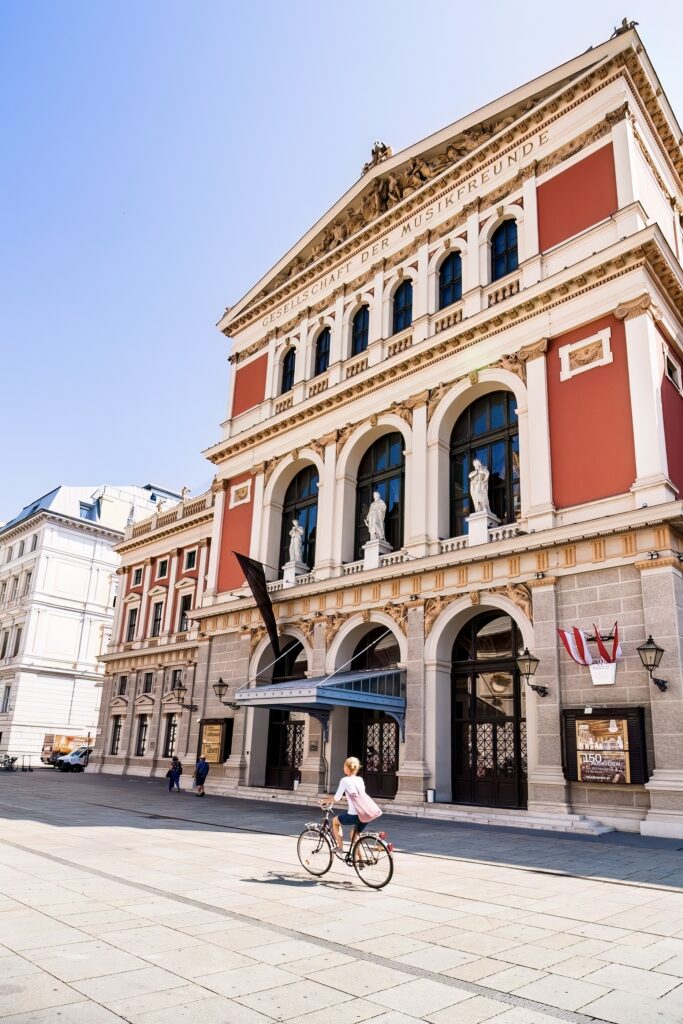
What You Need To Book In Advance
Like every major city, there are some attractions and tours that you need to book in advance if you don’t want to miss out.
In high season, I recommend pre-booking the following:
- St. Stephen’s Cathedral
- Schönbrunn Palace ticket
- Schönbrunn Palace tour
- Kunsthistorisches Museum
- Staatsoper tour
- Spanish Riding School performance
- Belvedere Palace (to see Klimt’s The Kiss)
- concert tickets at the Musikverein or Schönbrunn
- day trip to Salzburg
For the opera, you can check performance times and buy tickets for shows at various venues in Vienna here.
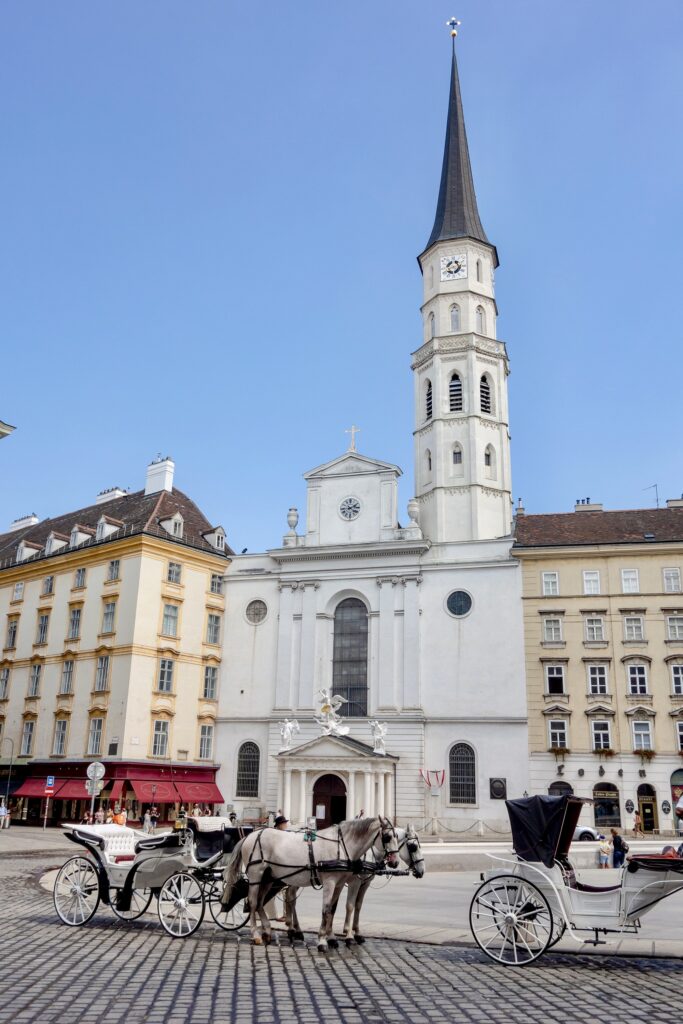
Best Time To Visit
Ideally, you should visit Vienna during the shoulder season, particularly late spring and early fall.
Winters is also a good time to visit. The city is cold, but snowfall is not a common occurrence.
Plus, the city transforms into a festive wonderland from late November to late December, brimming with Christmas markets and holiday spirit.
Summer in Vienna, on the other hand, can bring stifling heat and larger crowds. In addition, some of the city’s historic buildings lack air conditioning, which might make a summer visit less comfortable.
You can also check the special events calendar on the Vienna tourism official website. That way, you’ll know if there are any big festivals or events that may make the city more crowded than usual.
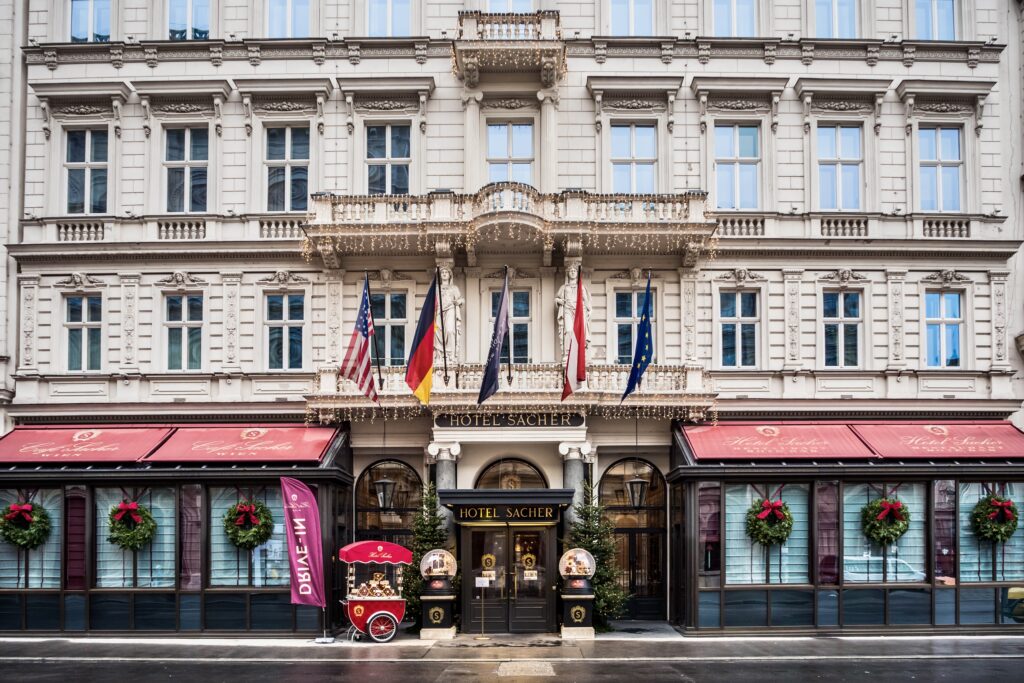
Where To Stay
As one would expect from a glamorous Baroque city, Vienna is home to some of the most sumptuous hotels in Europe. This includes some converted palaces where the rooms look right out of Schonbrunn.
The most opulent hotels is the Palais Coburg. It’s a beautiful hotel in a 19th century palace. But it will cost you!
The suites are all massive with their own terraces and antique furniture. Plus, there’s a spectacular spa on the rooftop.
The lovely Hotel Sans Souci Wien is an elegant properly near Museum Quarter with a spa. The Grand Ferdinand Hotel is centrally located and has a unique rooftop pool and restaurant.
Of course, you can always check out classics like Ritz-Carlton, Park Hyatt, and the elegant Hotel Sacher Wien.
You should also check out these lovely boutique hotels: House of Time or Palais Hansen Kempinski.
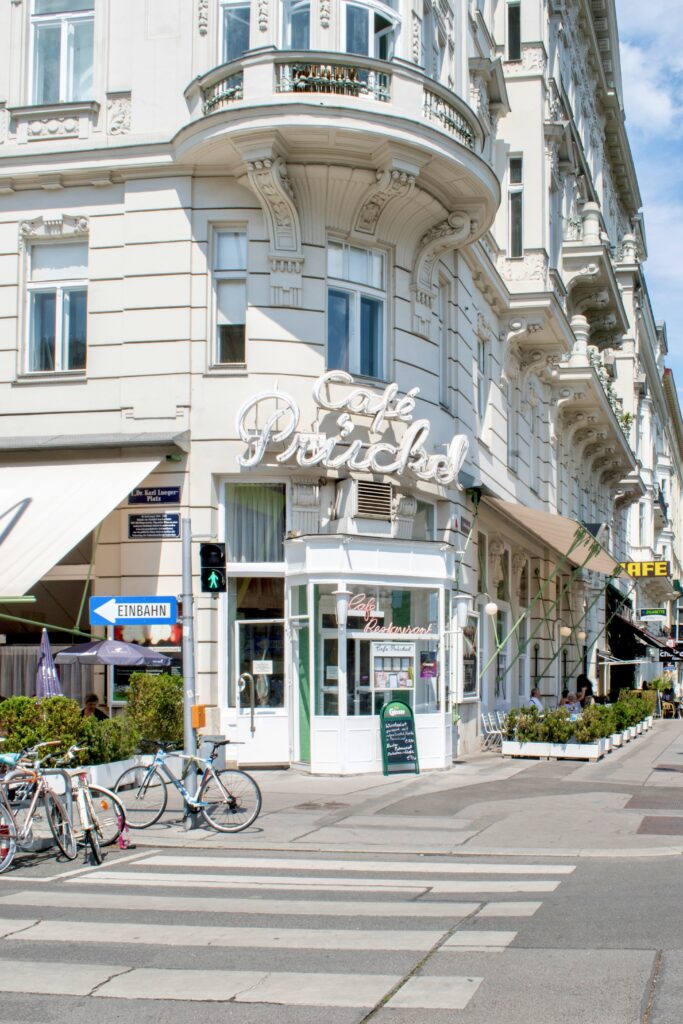
Viennese Cafes
Long before Starbucks spread across the world, the Viennese were devoted patrons of their coffee houses.
These august institutions have changed kittle since the 19th century, when they were the center of intellectual life.
Many of the cafes are opulent with dark wood paneling and heavy gilded mirrors. You’ll often find newspapers, attached to wooden rods to keep them tidy and easy to handle.
The most popular cafes, where you’ll need a reservation, are: Cafe Central, Cafe Landtmann, Cafe Hawelka, Cafe Demel, and Sacher Cafe.
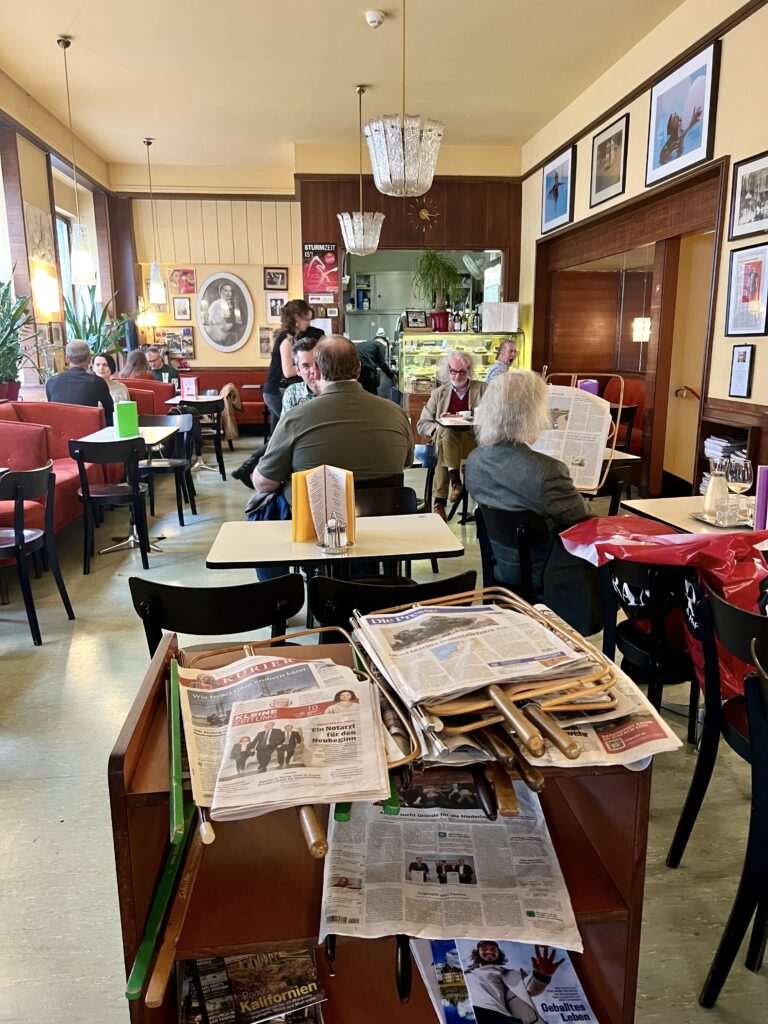
But there are also other, less crowded, options where you’ll find the locals.
For example, I’ve enjoy Cafe Korb, Cafe Diglas, Cafe Sperl, Cafe Prückel, and Cafe Rudigerhof.
Please don’t go to a coffee house expecting to be able to rush in and out! These old fashioned institutions don’t do anything in a hurry.
For an American used to faster service, you may almost feel like you’re being held hostage.
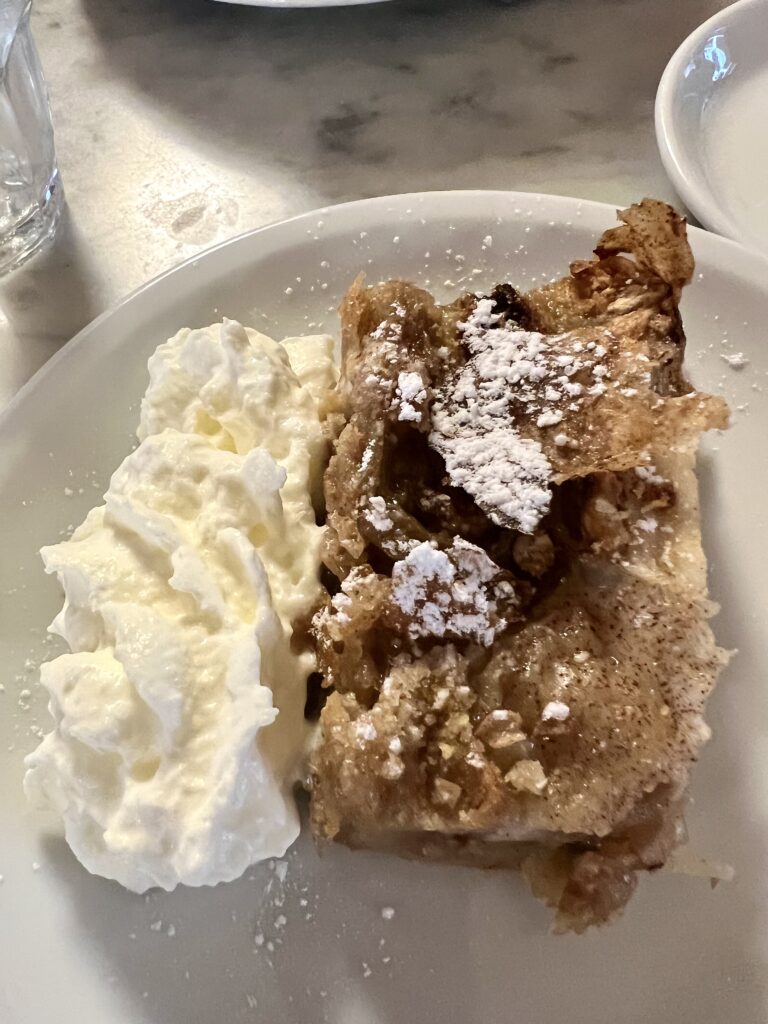
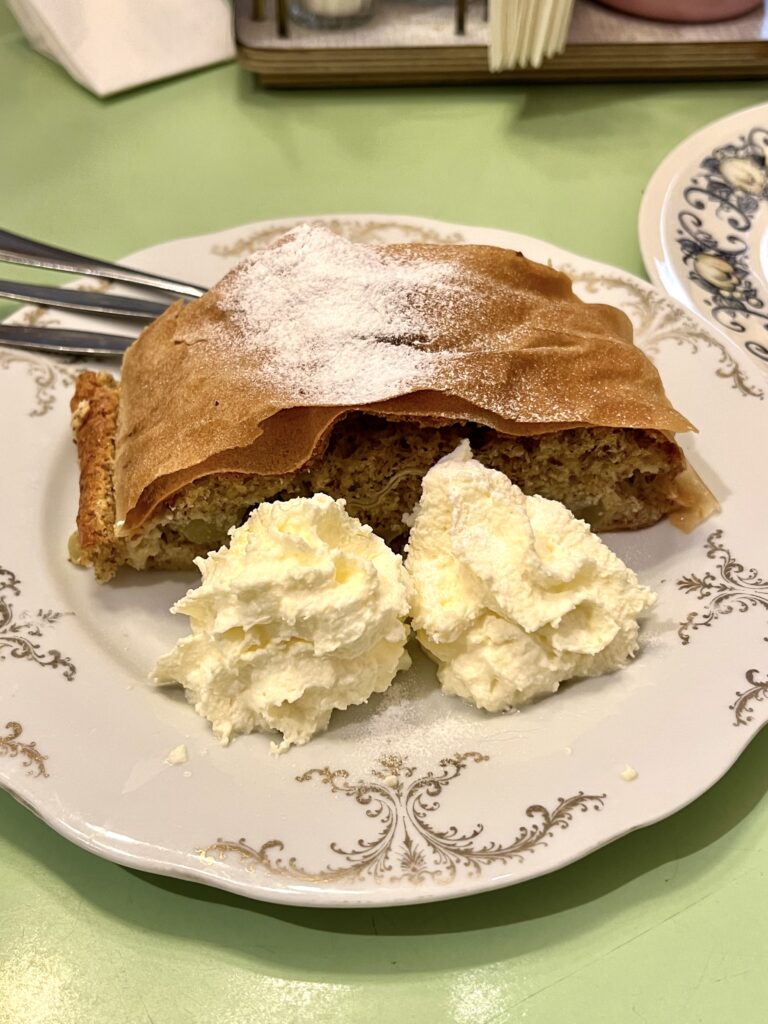
Local Cuisine
Viennese cuisine is well-known for its rich and diverse flavors, drawing culinary influences from the Austro-Hungarian Empire. It’s known for comforting and often sweet dishes.
Key local specialties include wiener schnitzel (a breaded veal cutlet), tafelspitz (tender boiled beef), and apfelstrudel (apple strudel).
When it comes to snacks, Vienna doesn’t disappoint. The city’s wurstelstands serve up tasty sausages, and it’s easy to find a good sandwich for a quick lunch.
Desserts are a standout in Viennese cuisine, known for being very sweet and often elaborate. They usually feature generous amounts of chocolate, cream, meringue, and pastry. And they tend to be fruity.
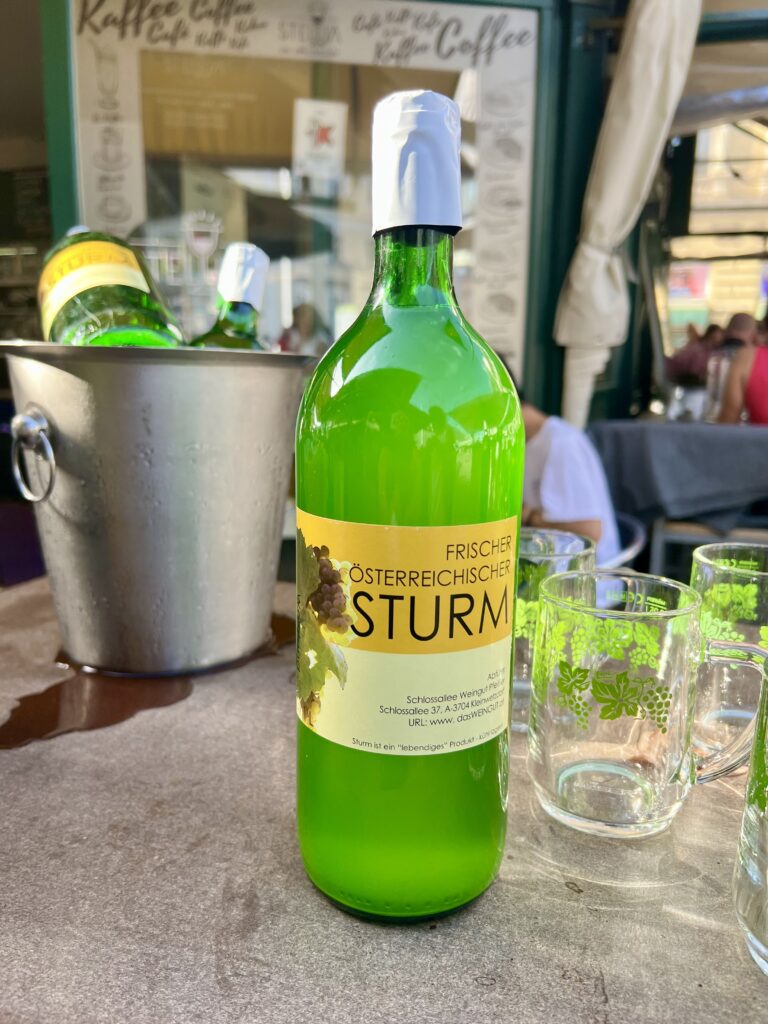
The sachertorte is the star of the show — a chocolate cake with dense layers separated by apricot jam and finished with a smooth chocolate glaze.
One way to sample them all, which I personally enjoyed, was going on an evening pastry tour. I loved the dumplings with cream cheese!
The best wine to sample is Grüner Veltliner. This white wine has a fresh, crisp taste, often with notes of green apple, citrus, and white pepper.
In the summer and early fall, the Viennese drink Sturm. It’s a type of young wine fermented with freshly pressed grape juice.
There are also plenty of small breweries and brewpubs. The most common types of beer are a dark heavy lager, a light wheat beer, and an unfiltered pale ale.
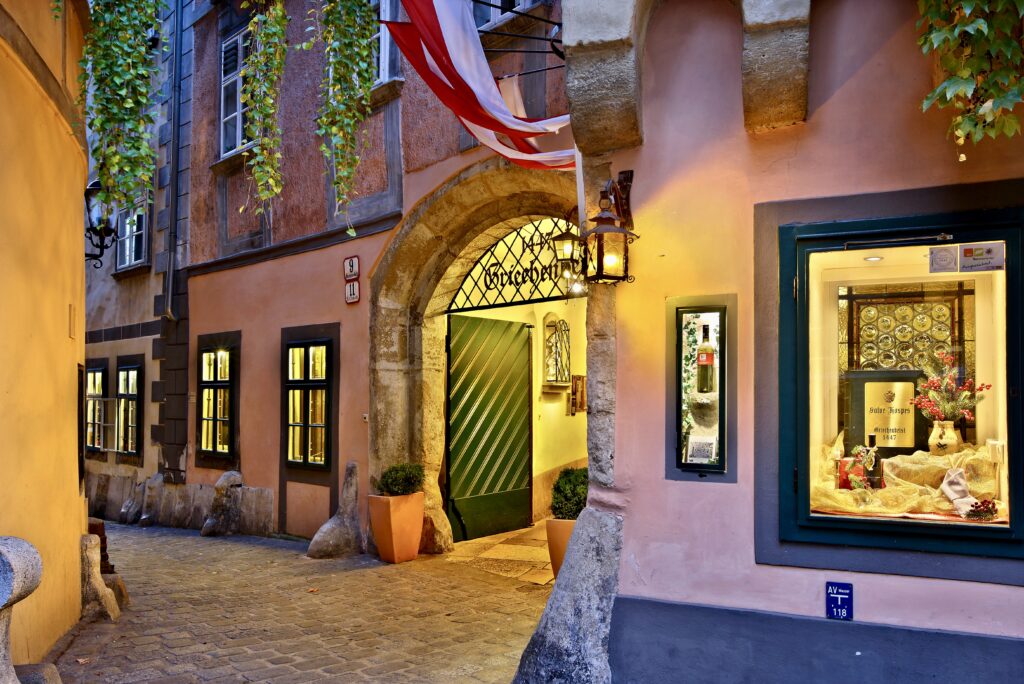
Restaurants
Vienna offers an impressive selection of restaurants and cafes, catering to all budgets. They range from fancy nouvelle cuisine to street corner sausage stands.
Some of the best places to eat are Vienna’s atmospheric inns and heurigers (wine taverns).
I’ve been to Vienna many times and these are my favorite spots:
- Nestroy Gastwirtschaft (2nd district), great goulash
- Plachutta (1st district), for good tafelspitz
- Zum Alten Beisl (10th district), lovely location, amazing food
- Zum Alten Fassl, Haasl Beisl (5th district), schnitzel and hearty dishes
- Meixner Gastwirtschaft, (10th district), lovely garden, super schnitzel and amazing zwiebelrostbraten
- Kikko Ba (4th district), Japanese themed snacks and cocktails
- Lola Spanisches (1st district), tapas restaurant with funky cocktails
- Stomach (9th district), traditional Austrian fare and zany specialities
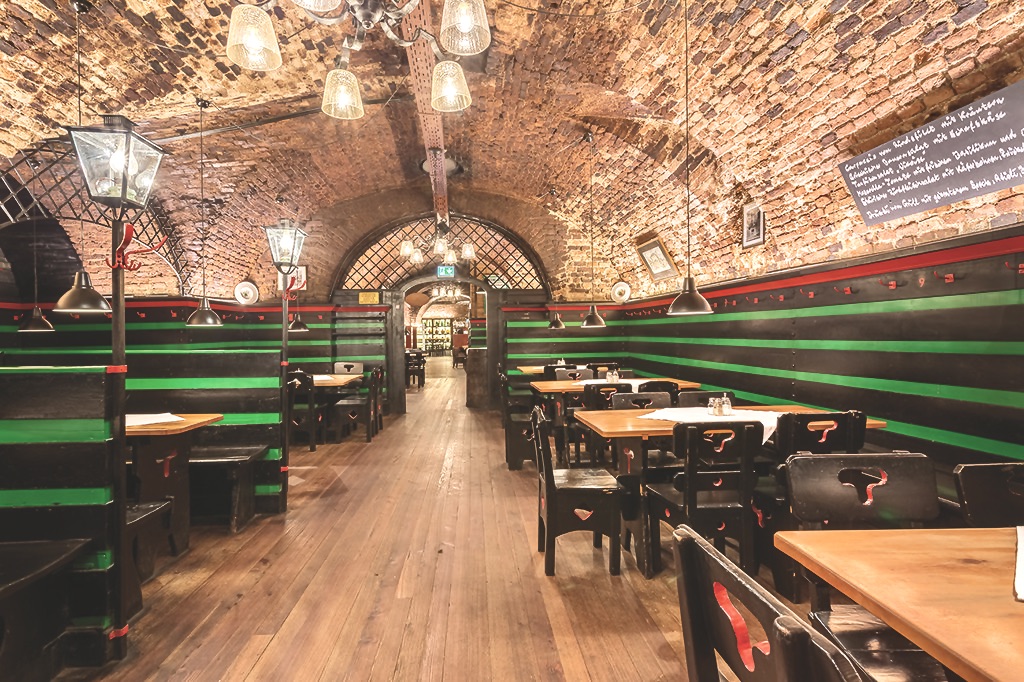
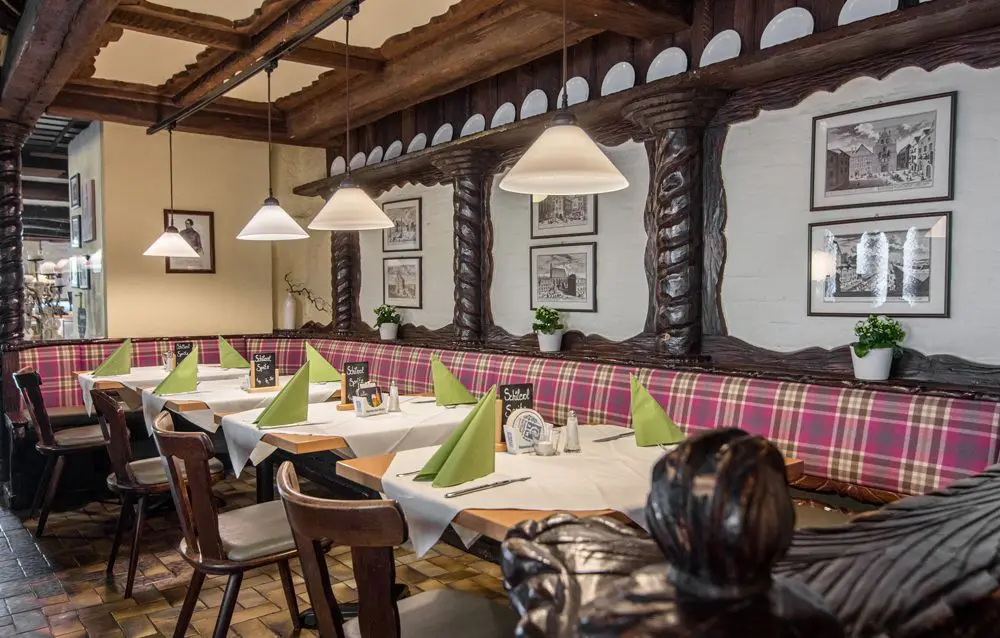
For a meal with a view, look no further than the Danube Tower. The tower, originally built to host the 1964 Viennese Horticultural show, is the tallest structure in Austria.
It’s home to a revolving restaurant with killer views. The restaurant constantly rotates, slowing showing the panorama of the city. You’ll need to book a 2 hour time slot reservation well in advance.
Tip: Some restaurants in Vienna still do not accept credit cards. Hard to believe, I know. But it’s best to keep some euros on hand just in case.
Tipping
Tipping is not obligatory in Vienna. But at restaurants and bars, you’ll want to round up the bill or leave a 5 to 10% tip.
For taxi rides, rounding up to the nearest euro is common. For hotel staff such as bellboys, a small tip of a few euros is appreciated for good service.
If you’re on a guided tour and are pleased with the service, a tip of 5-10 euros can be a kind gesture. I always tip my guides!
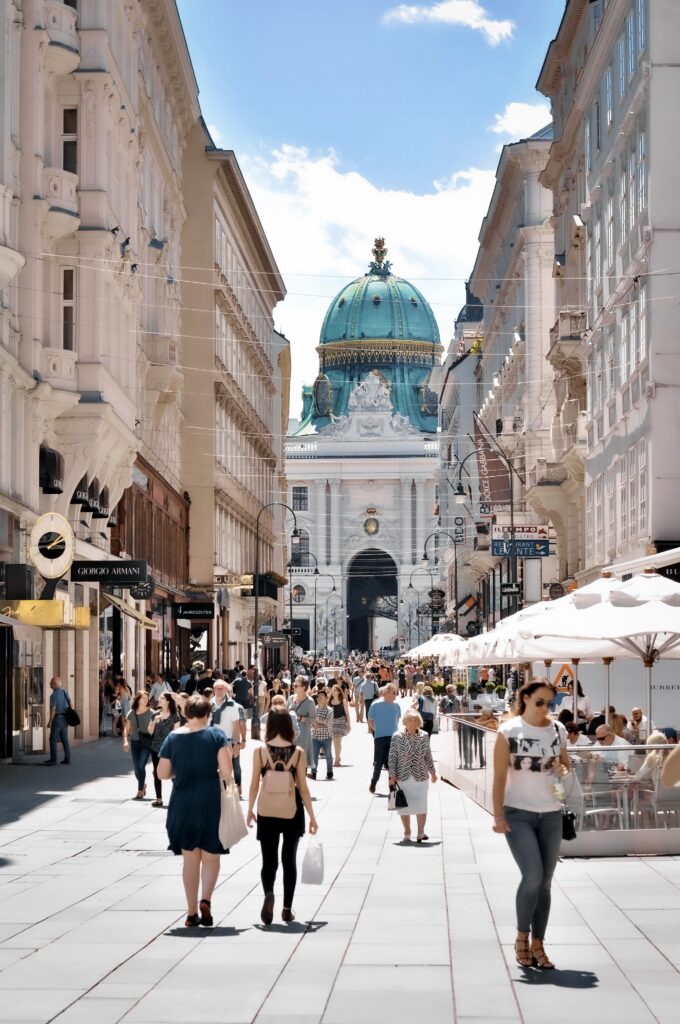
Shopping in Vienna
Vienna’s shopping scene often brings to mind the luxury and charm of a past era, leading many visitors to expect traditional, old-fashioned stores.
However, Vienna actually offers a wide range of shopping experiences, from international brands to unique boutiques.
The city’s premier shopping area is the “Golden U,” located in the Inner Stadt. This upscale zone is made up of three pedestrianized streets: Graben, Kohlmarkt, and Kärntner Straße.
Kohlmarkt, in particular, is known for housing some of Vienna’s most exclusive shops, including high-end brands like Gucci and Chanel.
Just a short walk from Graben, you’ll find Dorotheergasse, a street famous for its antique stores. This area is a treasure trove for those interested in unique and historical items.
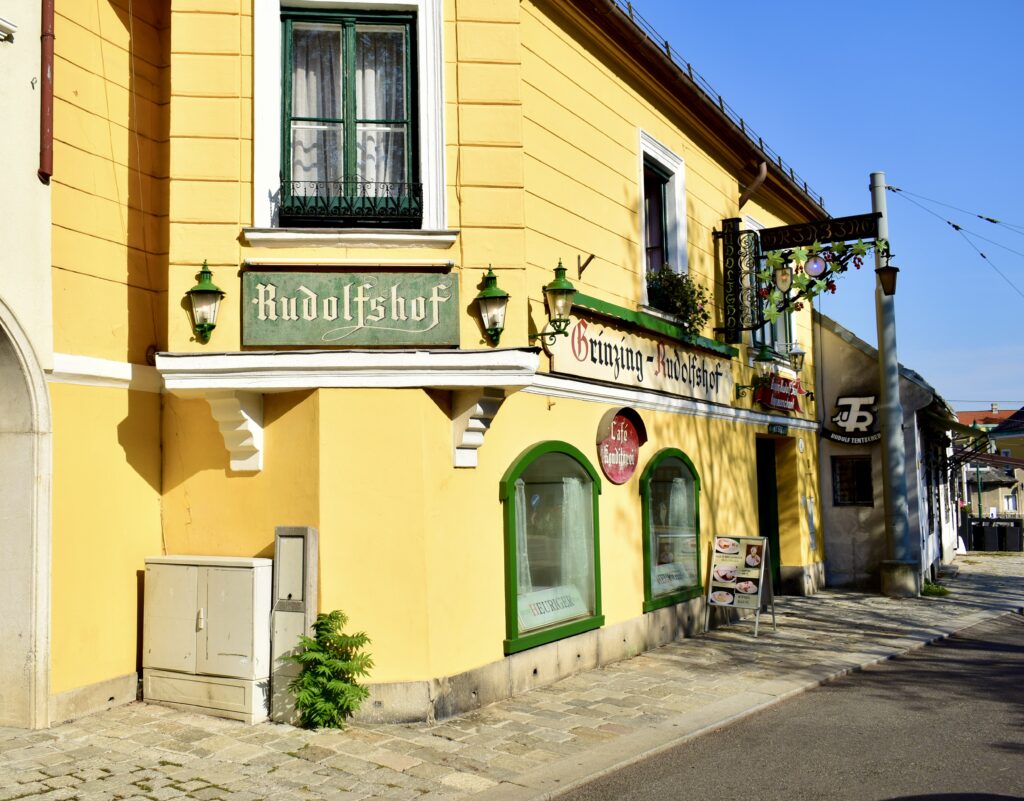
Heurigers
Heurigers in Vienna are traditional Austrian wine taverns that offer a unique and local experience for tourists.
These taverns, typically found in Vienna’s wine-growing regions like Grinzing and Neustift am Walde (19th district), serve young wine produced by local vintners.
Besides wine, they often offer a variety of Austrian dishes, particularly cold meats, cheeses, and bread. The atmosphere at a Heuriger is typically cozy and rustic, often with outdoor seating in gardens.
They are not only places to enjoy wine and food but also cultural hubs where locals and visitors alike gather for a relaxed and authentic Viennese experience.
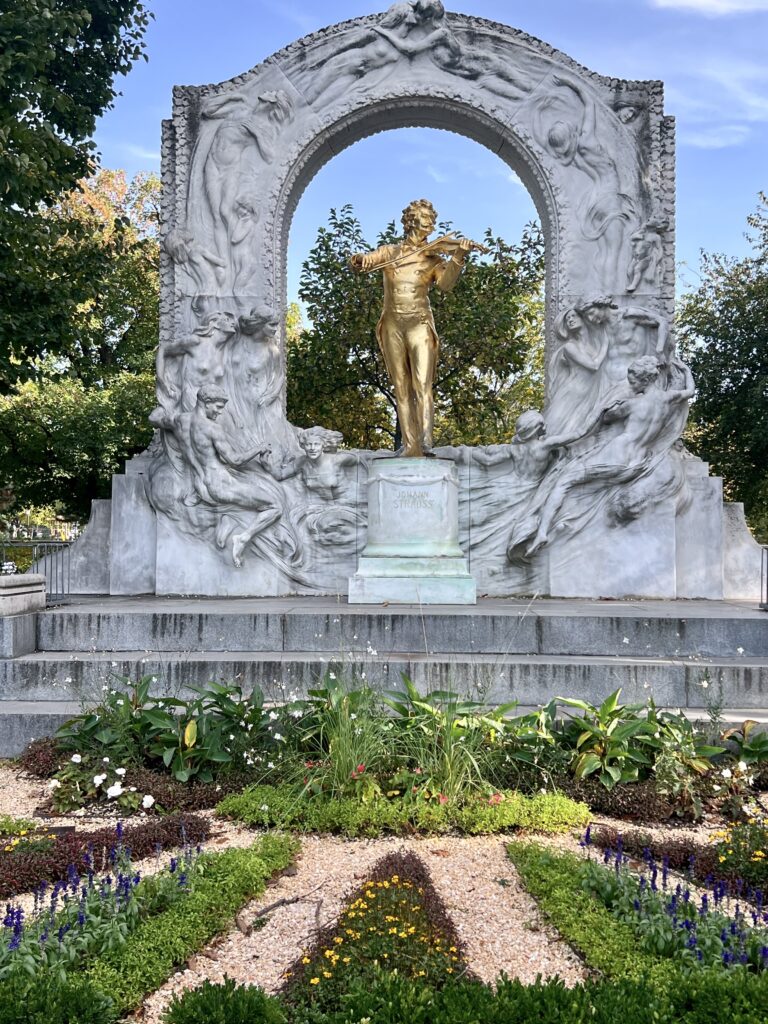
City Passes
The Vienna Card provides you with unlimited access to the U-Bahn and other transportation. It will also give you discounts at the major tourist attractions and cut rate prices for the airport shuttle.
You can purchase it at hotels, on the U-Bahn, and at most tourist attractions.
The Vienna Pass, I think, is the best value if you plan to do a lot of sightseeing. You can buy it in 1, 2, 3, or 6 days increments.
You get skip the line access to almost every attraction in the city, with the exception of the Karlskirche, Wien Museum, Time Travel Vienna, and the Vienna State Opera Tour.
The pass also includes access to the hop on hop off tourist bus, another added benefit.
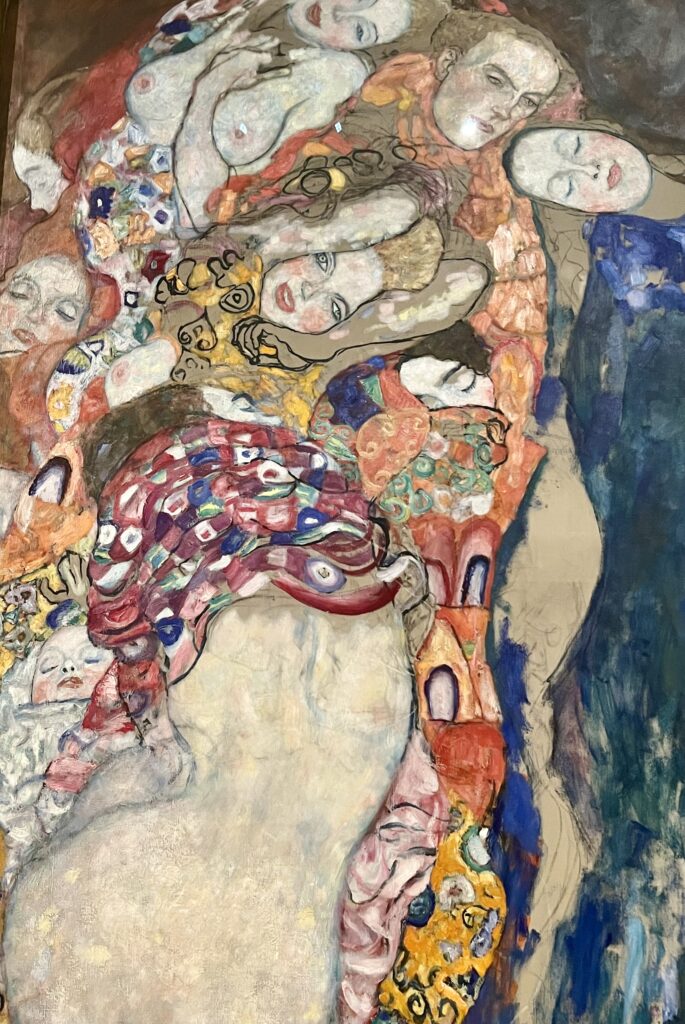
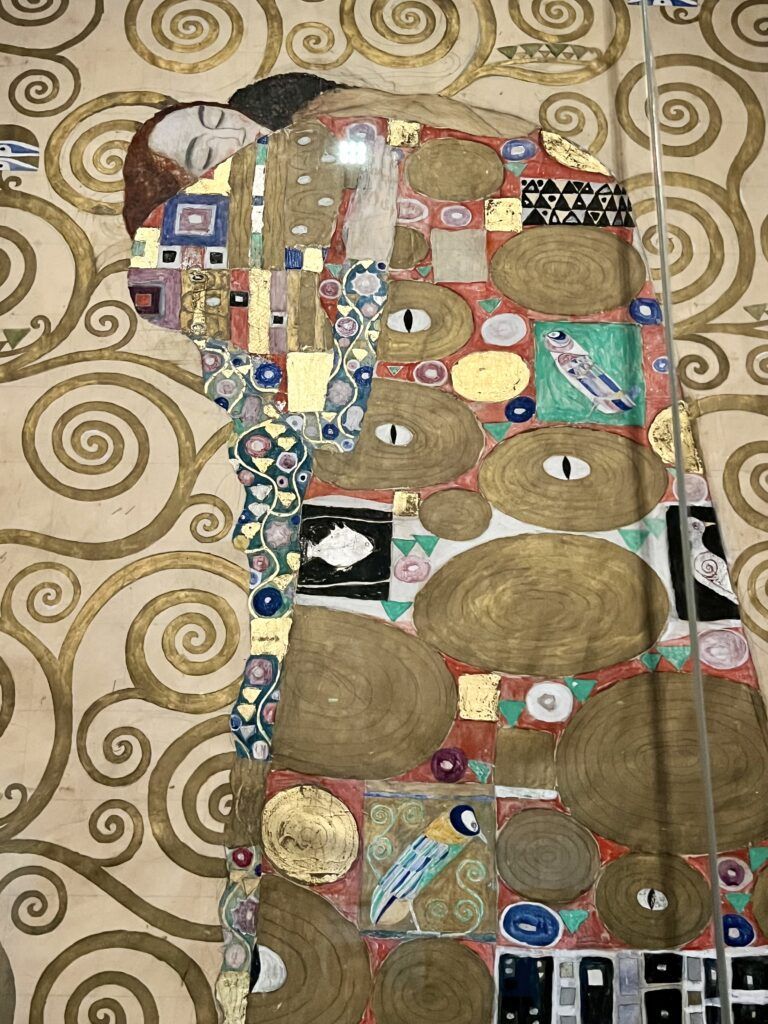
Museums In Vienna
Vienna’s status as a hub of art and culture is often underrated. This city boasts a remarkable array of museums that reflect its deep-rooted artistic legacy and historical importance.
The museums house vast collections that feature artworks from some of history’s most eminent artists. Many are treasures from the Hapsburgs’ 600 year reign.
And of course, Vienna is the city of Gustav Klimt, the famed Art Nouveau artist. No where else in the world can you find so many of his golden paintings.
Yet, Vienna’s art scene extends beyond just historical grandeur. Amidst its picturesque charm, the city also has a vibrant contemporary art scene with museums like the Museum of Applied Art, the Secession Museum, and MUMOK.
To help you pick which ones to visit, here’s my guide to the best museums in Vienna.
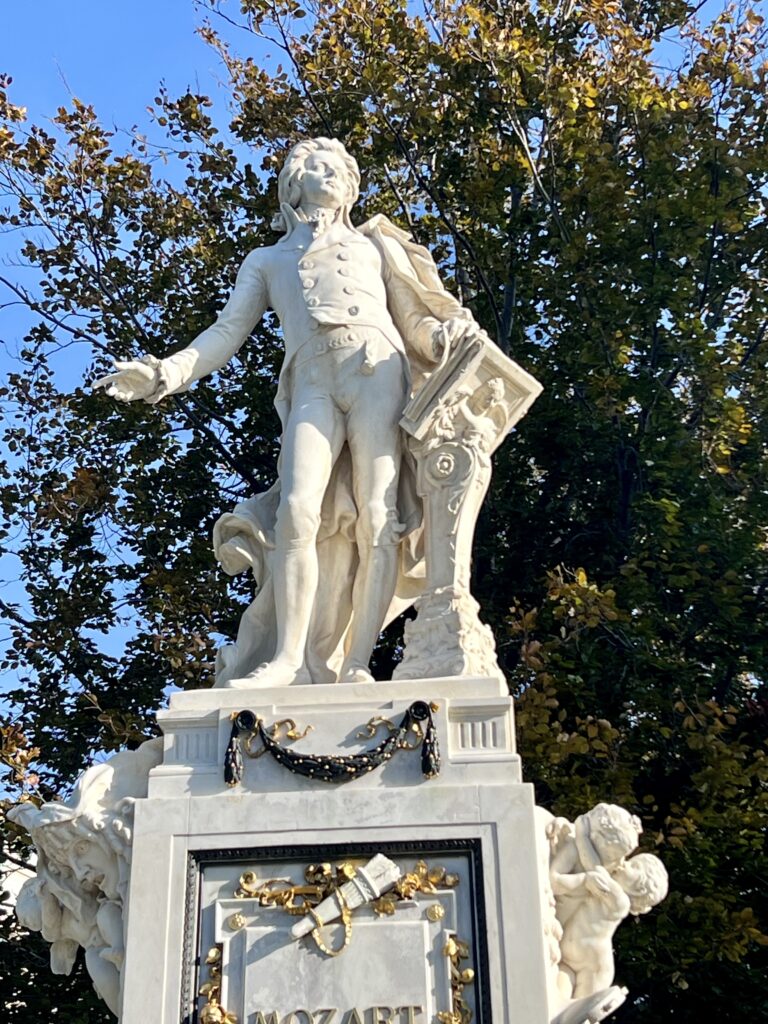
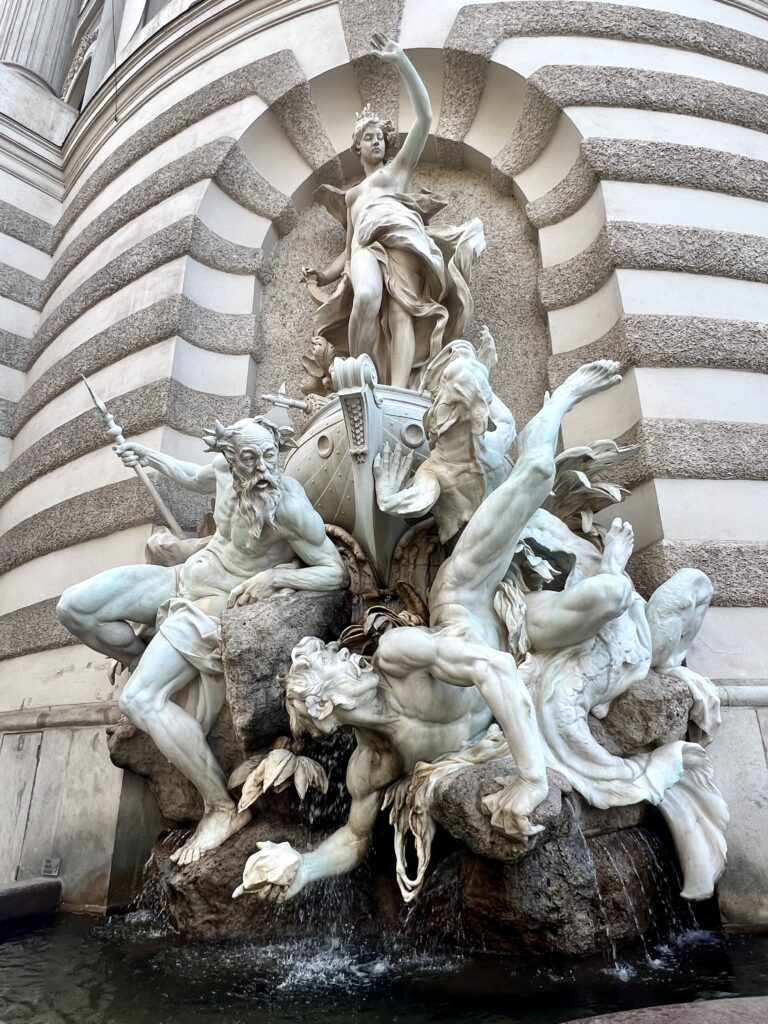
Language
English is pretty widely spoken. Even if not proficiently it is at least enough to get by in most restaurants and at the major attractions.
It never hurts to learn a bit of German (the official language in Austria) before you go though. You’ll want to use hallo (hello) and danke (thank you).
Closings
One thing I was not initially aware of is that all shops and grocery stores are closed on Sunday. There’s literally just a couple places open in the entire city.
If you are staying at an Air Bnb, keep this in mind when planning meals and stocking up on groceries.
How Many Days In Vienna
I think 3-4 days is the perfect amount of time to spend in the city. But I was just there for 8 days and was never at a loss for things to do.
I’ve written three itineraries you can consult for ideas on how to arrange your visit:
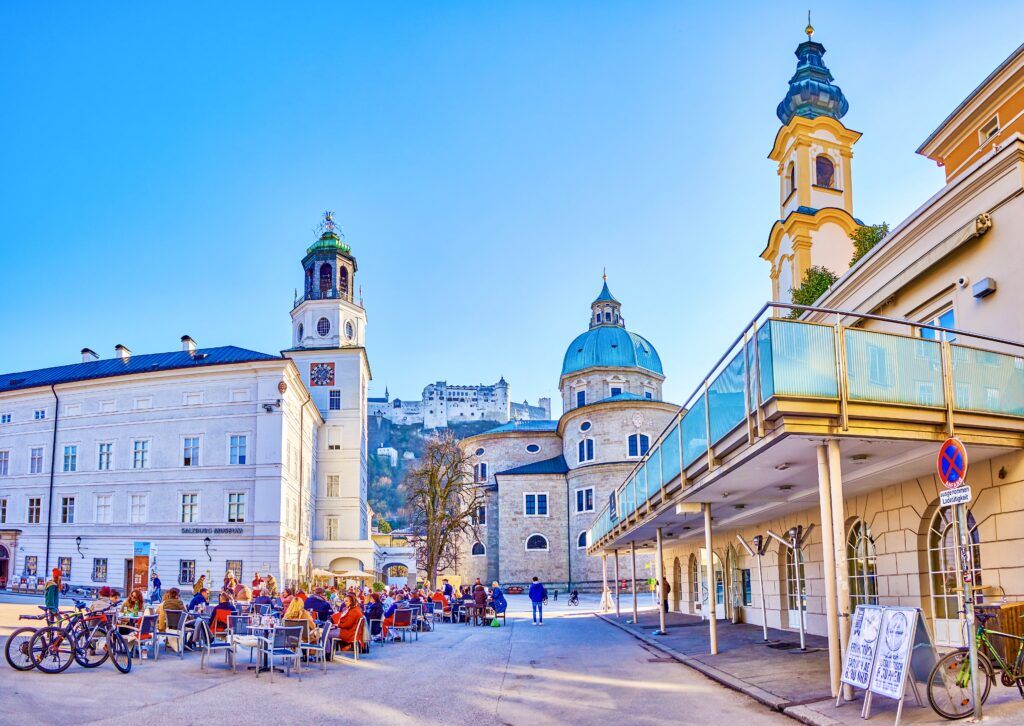
Day Trips From Vienna
Vienna’s location in Central Europe makes it an excellent base for several fascinating day trips. Here are four of the best options:
Salzburg
Salzburg is known as the birthplace of Mozart and the setting for The Sound of Music.
Salzburg is about 2.5 hours from Vienna by train. This picturesque city offers a stunning old town, Baroque architecture, and the imposing Hohensalzburg Fortress.
>> Click here to book a guided day tour
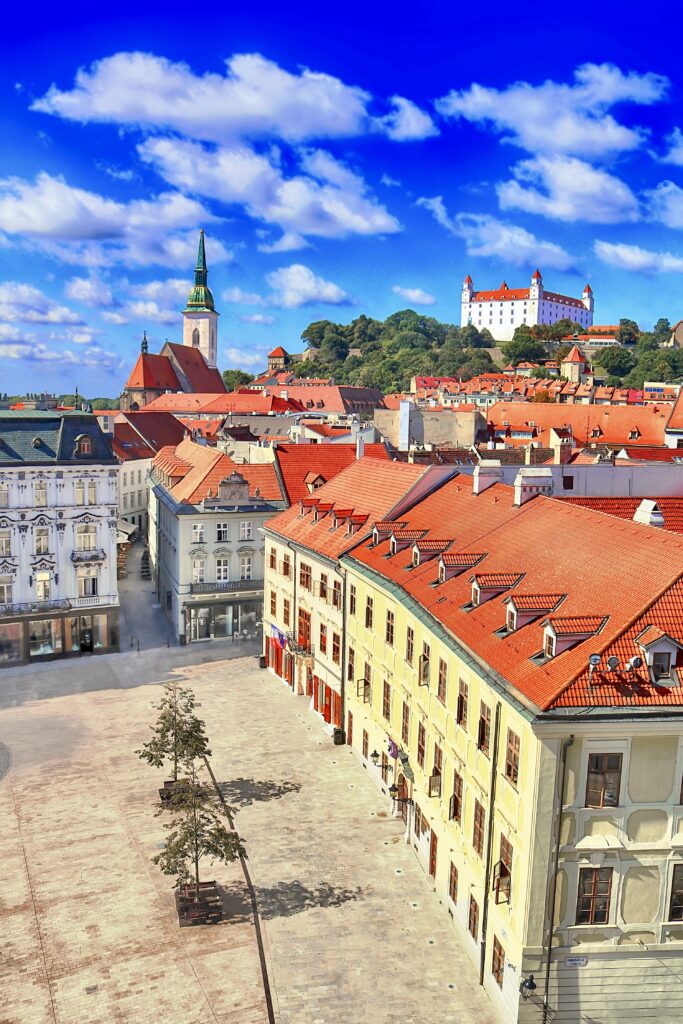
Bratislava, Slovakia
Just an hour away by train or boat, Bratislava is perfect for an easy day trip.
The capital of Slovakia, it offers a charming old town, medieval towers, and the impressive Bratislava Castle overlooking the Danube River.
Bratislava also has an excellent opera house. If you are shut out of a performance in Vienna, you can consider going here.
>>> Click here to book a guided day tour
Wachau Valley
A UNESCO World Heritage Site, the Wachau Valley is famous for its scenic landscapes, vineyards, and quaint towns like Dürnstein and Krems.
It’s ideal for wine tasting, hiking, and river cruises along the Danube. It’s also an excellent place to take a bike tour, which I’ve done before and found it absolutely blissy.
Graz
Austria’s second-largest city is about 2.5 hours away by train. Graz offers a blend of Renaissance and Baroque architecture, a lively arts scene, and unique attractions like the Kunsthaus (a contemporary art museum) and the medieval clock tower on Schlossberg hill.
I hope you’ve enjoyed my tips for visiting Vienna. You may enjoy these other Vienna travel guide:
- Best Museums in Vienna
- Beautiful Churches in Vienna
- Guide to the Hofburg Palace
- Guide to the Belvedere Palace
- Guide to the House of Music
- Guide to the Freud Museum
- Beethoven Guide To Vienna
- Is Mozarthaus Worth Visiting?
- Things To Do in Vienna in Winter
Pin it for later.

